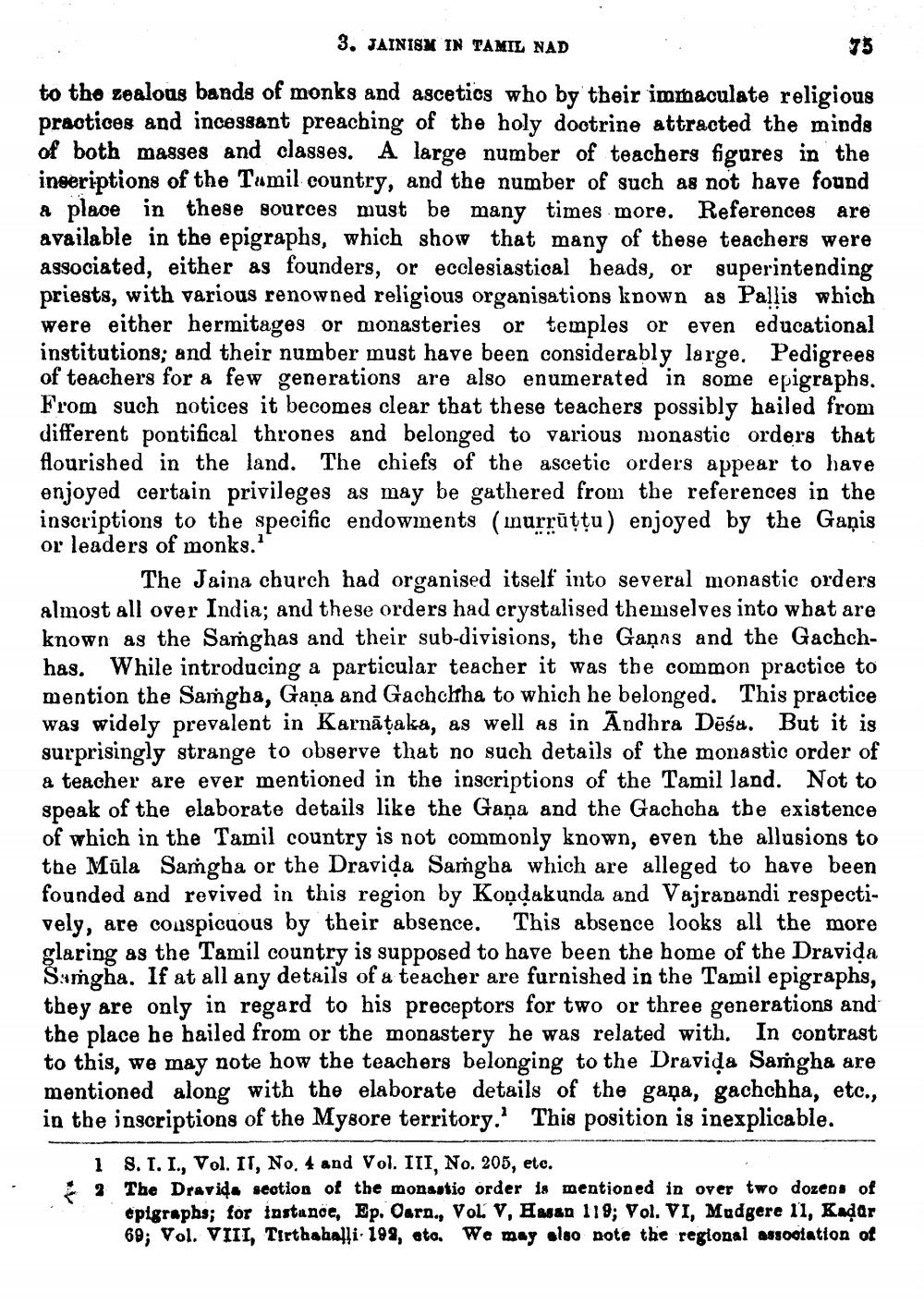________________
3. JAINISM IN TAMIL NAD
to the zoalous bands of monks and ascetics who by their immaculate religious practices and incessant preaching of the holy doctrine attracted the minds of both masses and classes. A large number of teachers figures in the ingeriptions of the Tamil country, and the number of such as not have found a place in these sources must be many times more. References are available in the epigraphs, which show that many of these teachers were associated, either as founders, or ecclesiastioal beads, or superintending priests, with various renowned religious organisations known as Pallis which were either hermitages or monasteries or temples or even educational institutions; and their number must have been considerably large. Pedigrees of teachers for a few generations are also enumerated in some epigraphs. From such notices it becomes clear that these teachers possibly hailed from different pontifical thrones and belonged to various monastic orders that flourished in the land. The chiefs of the ascetic orders appear to have enjoyed certain privileges as may be gathered from the references in the inscriptions to the specific endowments (inurrūţtu) enjoyed by the Ganis or leaders of monks.
The Jaina church had organised itself into several monastic orders almost all over India, and these orders had crystalised themselves into what are known as the Samghas and their sub-divisions, the Gaạns and the Gachchhas. While introducing a particular teacher it was the common practice to mention the Samgha, Gaņa and Gachchha to which he belonged. This practice was widely prevalent in Karnāțaka, as well as in Andhra Dāśa. But it is surprisingly strange to observe that no such details of the monastic order of a teacher are ever mentioned in the inscriptions of the Tamil land. Not to speak of the elaborate details like the Gana and the Gachcha the existence of which in the Tamil country is not commonly known, even the allusions to the Müla Saṁgba or the Dravida Samgha which are alleged to have been founded and revived in this region by Kondakunda and Vajranandi respectively, are conspicuous by their absence. This absence looks all glaring as the Tamil country is supposed to have been the home of the Dravida Šumgha. If at all any details of a teacher are furnished in the Tamil epigraphs, they are only in regard to his preceptors for two or three generations and the place he hailed from or the monastery he was related with. In contrast to this, we may note how the teachers belonging to the Dravida Samgha are mentioned along with the elaborate details of the gana, gachchha, etc., in the inscriptions of the Mysore territory. This position is inexplicable.
18. 1. I., Vol. II, No. 4 and Vol. III, No. 205, etc. i The Dravida section of the monastio order is mentioned in over two dozens of
epigraphs; for instance, Ep. Oarn., Vol. V, Hasan 119; Vol. VI, Modgere 11, Kadar 69; Vol. VIII, Tirthahalli: 199, ato. We may also note the regional association of
scoliloomine les Corne, vol. 1, "I'wan 119; Vol. VI, Madger




